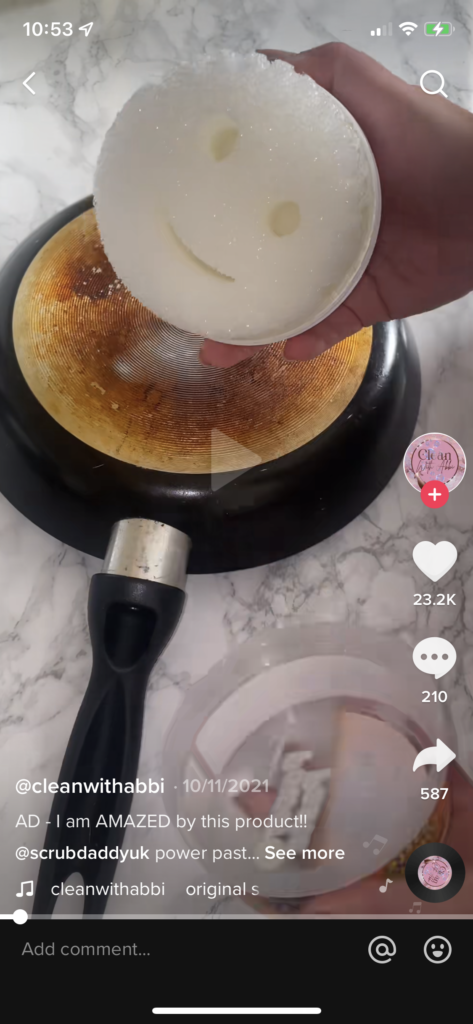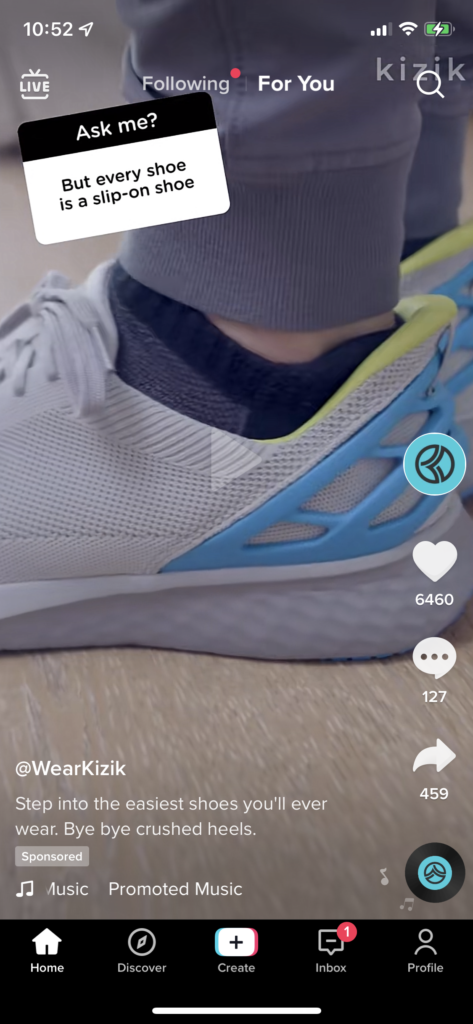3 Reasons For Shifting Influencer Marketing Strategy From Selling to Educating
Today’s consumers are more informed, more connected, and more demanding than ever before. In fact, according to one study, roughly 81% of respondents say they regularly read customer reviews and ratings before making a purchase. So how does this pertain to influencer marketing strategy?
Recently, interacting with reviews has become increasingly more complex as popular social media platforms evolve their advertising capabilities. This means that consumers can do more than just read reviews on a native website. They can also watch videos created by others who have purchased a product of interest, scroll through online forums discussing the purchase, and listen to related podcasts.
If you’re worried consumers have access to too much information, don’t fret. This drive for educational content is something brands can satisfy through influencer marketing. We understand that shifting from a more traditional sell, sell, sell tactic sounds unfamiliar.
Content that is education-oriented rather than sale-focused makes consumers 131% more likely to buy.
Why is an Education-Based Influencer Strategy Relevant?
There is some psychological reasoning behind what makes education-focused influencer campaigns drive conversions. All humans have a natural desire for belonging and some level of conformity to “fit in.” We are trained to embrace influencer marketing tactics because they are more authentic, more authoritative, and more attractive than other types of marketing.
We have also adapted to tune out more traditional forms of advertisements. Who hasn’t clicked SKIP AD immediately, or scrolled right past posts marked Sponsored?
Influencer marketing is a proven strategy for many reasons, but it’s extra effective when it’s used correctly. A successful influencer campaign should focus on educating before selling for the following reasons.
Reason #1: Ads Are Interruptions
Social media algorithms are built to show users content that specifically relates to them. It’s how they keep people scrolling longer and with more user satisfaction. It can be jarring when a brand ad pops up unexpectedly in the middle of a video. This can happen when you’re watching a video of a dog communicating in English, or someone showing off a ridiculous pair of glasses they ordered from Amazon to help with motion sickness.
That second one is about a product and, with over 14.8 million views, it probably has led to increased sales. But because it’s posted by a regular-looking person, it fits into a normal feed.
Here are some examples of ads that we wouldn’t describe as seamless because they are sales-focused:


Reasons these ads stick out like a sore thumb:
- It’s an ad for a TV show. If you want ads for TV shows, you’d be watching TV, not doing a TikTok deep dive on a true crime case from 1964.
- This brand is attempting an educational approach to its advertisement by adding the text overlay “How to play Lightning Link?” But it is so obviously an ad that we almost passed by it before going back for a screenshot. Tip: look at the engagement on the right-hand side and compare it to our examples below.
- A shoe company ad for their latest product. They used a smart tactic by adding the TikTok question/answer block on the top left, but it’s still an ad that links to a product page.
Though platforms like Instagram and TikTok are good at hiding it, that tiny ‘Sponsored’ tag at the bottom of each ad is what will lead users to swipe away. Now, let’s take a look at some approaches by influencers and brand partners:


All three of these examples demonstrate the effectiveness of influencer marketing that educates rather than goes for the sale and that fits easily into a targeted audience’s timeline.
- Even with ‘AD’ as the first word in the caption, this content piece is effective because it demonstrates the product in action. With over 23,000 likes and 580 shares, this un-sponsored ad no doubt led to some conversions for Scrub Daddy.
- Katie Feeney is an influencer with the blue checkmark which automatically gives her authority. In this video, she is pushing for sign-ups for Amazon’s Prime Student program while dressed for the part. This video would no doubt show up on college students’ timelines due to the algorithm and with over 300,000 likes and 2,000 shares, it was effective.
- Unlike the shoe ad, we talked about above, this unboxing video details a color-changing shoe product by showing it happen. This video has over 2 million likes and 38 thousand shares!
Reason #2: Building Trust Through Influence
Seeing a product (or service!) touted by a regular person is the key to building trust for your brand.
A study found that consumers find a brand more trustworthy if they consume its educational content a week later.
Need more reason to create content that educates? Consumers’ brand affinity compounds with time, rather than diminishes.
Finding the right type of influencer to represent your brand is an important part of establishing trust with prospective consumers. With either micro-influencers or macro-influencers, consider their size of following, their particular content focus/niche, and their post engagement rates.
People follow social media influencer accounts that they relate with and trust the brands these people say they like or use themselves. The content strategy you develop with influencers should include multiple posts about the same product, to further increase their authority on the subject and build trust with their audience.
Reason #3: Increasing Brand Awareness
Brand awareness describes how familiar your target audience is with your brand and their sentiment about it. Familiarity and trust play a huge role in consumers’ perception of brand awareness.
Influencer marketing strategy helps increase brand awareness because influencers have a built-in audience that is relevant to their content focus. This is another reason why choosing the right influencer to work with is so important! Increased brand awareness leads to increased trust in your products or services, which leads to increased leads or sales – without sponsoring posts or using sales-y jargon.
The Bottom Line on Strategizing for Influencer Marketing
Consumers want all the information they can get about a product or service before making a purchasing decision. Marketers can strategically guide the delivery of that information by developing influencer marketing campaigns that are education-focused rather than selling-focused. When this is done effectively, your brand will increase its awareness and recognition, and consumers will develop trust with your brand, leading to conversions.
Sound like something you need to incorporate into your marketing strategy? Find out if influencer marketing makes sense for your industry.
Frequently Asked Questions
What is the future of influencer marketing?
Influencer marketing is continuing to grow every year. Brands should view influencer marketing as a strategy that is here to stay and should consider adding this technique into their own campaign plans.


